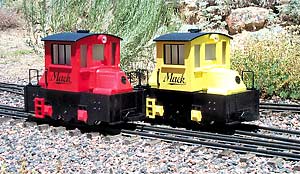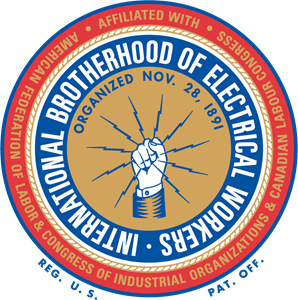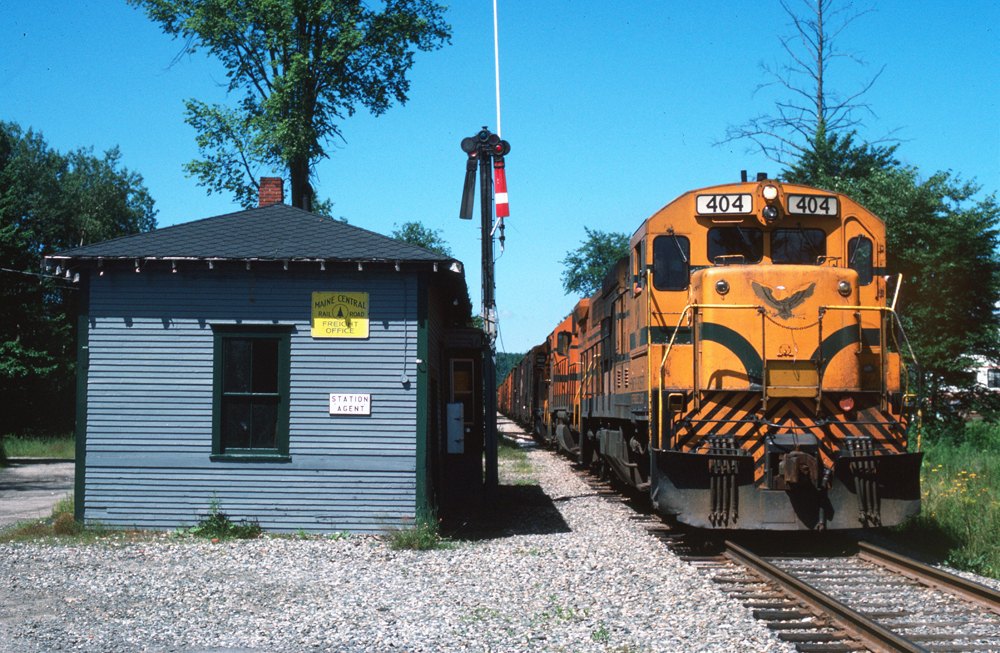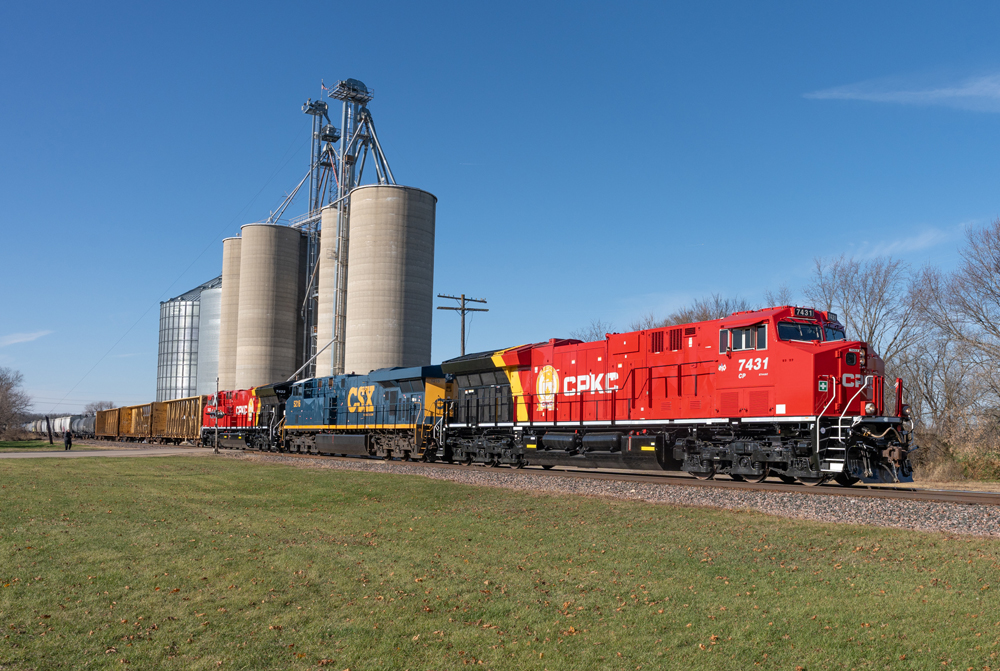1:24 scale, gauge 1 “Mighty Mack” locomotive
Hartland Locomotive Works
PO Box 1743
LaPorte IN 46350
www.H-L-W.com
Price: $66.95
1:24 scale, gauge-1 version of a Mack, dual-engine, center cab, gasoline industrial switcher; injection-molded plastic construction except for metal wheels, motor, and electrical components; operating non-directional front, rear, and cab-interior lighting; four-point electrical pickup from axles; distinctive vintage Mack truck hoods at each end; frosted window glazing; loops for hook-and-loop couplers installed; tractive effort, 6 oz. at full spin, or about five standard eight-wheel freightcars; current draw at full slip, 24V, .5 amp
Pros Unusual short-line or industrial locomotive, adaptable to a variety of model railroading scenarios; limited but attractive molded-in detail; reflects genre of “critter” style locomotives; a good candidate for added details or kitbashing; working lights; can motor with both axles powered; positive pickup of track current; responsive to the throttle, but seems to prefer the fast track
Cons Frosted windows would need to be replaced to detail cab interior; unpainted plastic body contributes to toylike look
Our sample is comprised of unpainted, injection-molded plastic parts mounted on a two-axle motor block, hidden under the chassis. The colored parts (primarily the superstructure) are snapped into place on the black frame assembly. Detailing, which seems to be a reasonably accurate representation of the prototype, is molded into the cab, hoods, journal boxes, springs, and frame sides. The locomotive has a shiny finish except for the textured, black cab roof, headlight lenses, and frosted window glazing.
The model, in 1:24 scale, has a 6′-0″ wheelbase, with 36″ scale wheels. It measures a scale 14′-9″ in length, excluding couplers by 7′-9″ wide at the cab overhang. The engine is 11′-3″ high overall. Headlights with a nicely textured lens are mounted on each end of the cab. The lights are functional, but non-directional, and brighten as track power increases. An interior light is located in the cab. All windows are glazed with a translucent, frosted material.
Both axles are powered. Power is picked up by each wheel and collected by carbon brushes for transmission to the can motor and lighting harness. The locomotive is responsive to the throttle, but seemed to prefer faster speed settings to slower ones. It is somewhat noisy, but I suspect that it will quiet down with some run-in time.
Even though the “Mighty Mack” may come up short for some hobbyists, I feel that it offers great potential. As it comes from the box (eight color schemes are listed in Hartland’s catalog) it is a credible, functional piece of motive power. It should be attractive to younger railroaders and to beginning largescalers for its operating characteristics. And, best of all (at least in my mind), it’s a prime candidate for kitbashing, detailing, and weathering. Give it a try.














